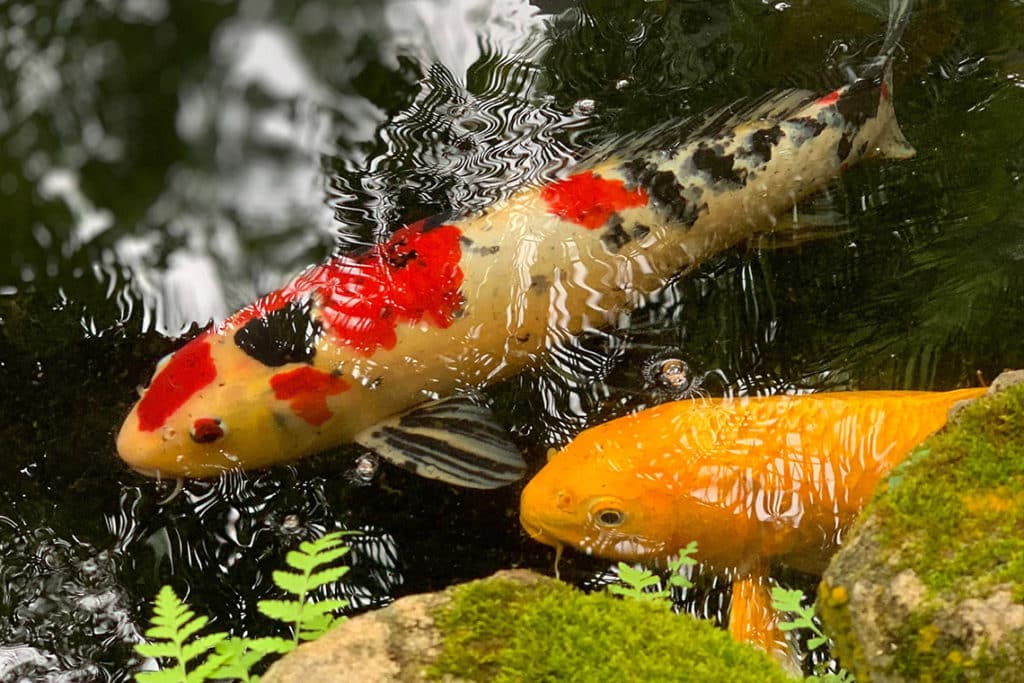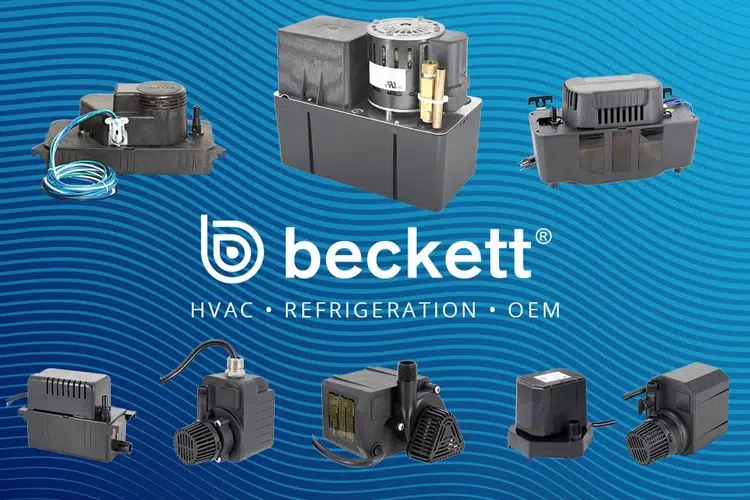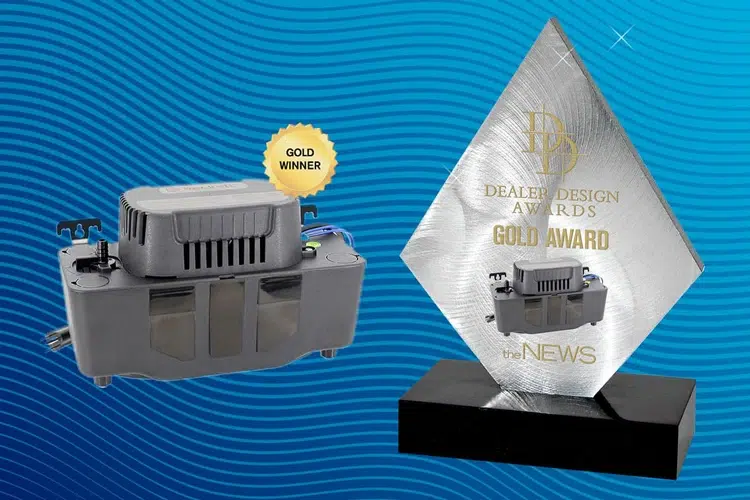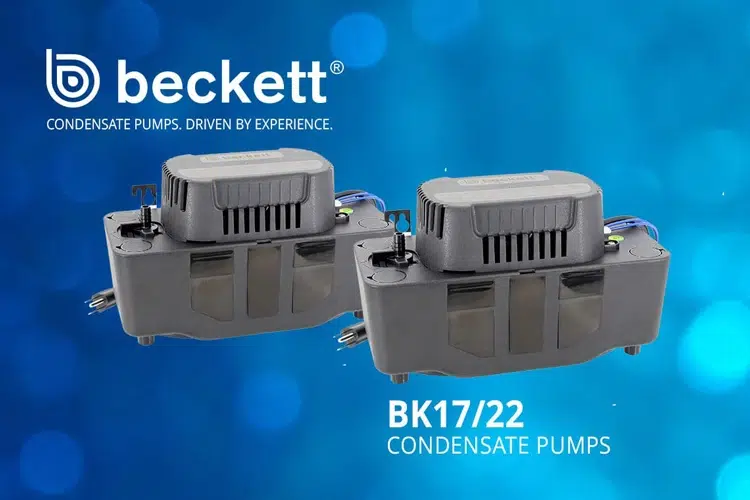Pond Algae Maintenance and Control
Algae growth is a natural process in ponds. However, algae blooms can be hazardous to fish and plants. Understanding pond algae maintenance and control is key to the health of your pond. This article will discuss why algae are bad for ponds, how to eliminate pond algae, and tips on preventing pond algae.
Algae is bad for fish because it will steal all the nutrients and oxygen from the water. This makes it difficult for fish to breathe. If left uncontrolled, algae growth harms the pond ecosystem because it can block sunlight from reaching plants, lead to increased levels of ammonia, nitrates, and phosphates, and cause water quality to deteriorate.
Whether a new or experienced pond owner, you will face this common and often frustrating challenge with algae. Don’t be alarmed. You can eliminate and prevent algae growth in your pond in several ways.
Eliminate Pond Algae with an Algaecide Water Treatment
An algaecide pond water treatment is the most effective way to remove algae in ponds. Algaecides are chemicals that kill algae in pond water. With proper use, Beckett® Algaecure™ Algaecide is an effective method for removing algae.
There are a few essential steps that you must do first to maintain an adequate level of oxygen for your fish before, during, and after using an algaecide. Once algae die off, it no longer gives oxygen to the fish. Follow these steps to ensure your fish are unharmed during the treatment. If not followed carefully, the fish can suffocate.
- Remove algae and other gunk from your pond by hand or with a fish net before an algaecide treatment. This is especially important in warm weather as warm water holds less oxygen than cool water.
- Aeration supplies your fish with vital oxygen. Provide adequate aeration during the algaecide treatment. Install an aeration device in the pond and operate it 24 hours daily. Use a fountain spray or waterfall during the algaecide treatment. These will all increase oxygen levels in your pond.
- Always perform an algaecide treatment in the morning to closely monitor your fish during and after the treatment. Never treat your pond with an algaecide in the evening. Oxygen-producing plants provide less oxygen in the evening and night.
- If your fish appear sluggish during the algaecide treatment and gather at the fountain spray head or water surface, they lack oxygen and need immediate attention.
- You can spray water from your garden hose into the pond as an emergency measure. Use the jet spray setting on your garden hose. Simulate rainfall by spraying the water in and across your pond. Don’t worry about the chlorine harming your fish, as it will be dispersed from the water due to the vigorous force of the water spray.
- If you don’t have a sprayer hose, you can scoop pond water with a bucket and pour it back into the pond. Pour from up high so that you create water bubbles and splashing water. Repeat these steps until your fish are stabilized. Add an aerator, fountain, or waterfall for a permanent solution and operate it 24 hours a day.
- After the water has been treated with algaecide, you must immediately remove any dead and decaying algae. You can remove the dead algae by hand, with a fish net, or a pond vacuum. Remove dead algae from foam filters and filtration devices to improve their performance.
- You can use a sludge remover that helps gather floating debris, and these clumps will fall to the bottom of the pond, where you can easily scoop them out by hand, with a fish net, or a pond vacuum.
- The debris collected from your pond should be disposed of in a trash bag or other container so it doesn’t end up back in the water.
Prevent and Control Algae with a UV Pond Clarifier and UV Filter
UV pond clarifiers and filters are chemical-free methods to control and prevent algae in ponds and water gardens. They work by emitting ultraviolet light that can kill the algae cells. The Beckett® In-Line Non-Submersible UV Pond Filter for algae control helps to reduce green water in ponds. As the pump circulates water through the clarifier, the 9-watt ultraviolet bulb is exposed to algae and produces clean, clear water, controlling algae growth.
This device is excellent to use when your pond is experiencing excessive algae growth. Your pond will achieve clear, clean, algae-free water in days instead of weeks. When used regularly, it will keep algae blooms at bay.
Prevent Algae Growth with Pond Maintenance
Pond maintenance is key to preventing algae growth. When cleaning a pond, removing leaves, floating debris on the water’s surface, branches, and anything that can clog up your pump is essential. Beckett® Fish Nets are an excellent choice to help scoop out leaves and unwanted debris from your pond.
In the late winter/early spring, examine your pond plants and aquatic plant baskets. Perform weeding and trimming of any dead or brown leaves. Wipe off pond gunk from your aquatic plant baskets, spitters, rocks, and pond lights. Use your hand or a bottle brush to remove algae.
The debris should be disposed of in a trash bag or other container so they don’t end up back in the water. Examine, and clean your pumps and pond filters several times a year. In hot weather, keep the pond water level topped off at maximum height. This can prevent algae growth, keeps your water clean, and ensures your pump runs efficiently.
Prevent Pond Algae Growth in Ponds with Fish and Plants
Algae can harm the environment by releasing toxins into the water. Add fish and plants to your ponds to prevent algae from growing in your pond. Aquatic plants like water lilies and lotus are beneficial for ponds because they prevent algae growth by blocking sunlight from reaching the bottom of the pond. An ideal plant coverage should not exceed 60% of the pond’s surface.
Fish, such as Shubunkin Goldfish and Koi, are important for ponds because they eat algae and help promote a balanced pond ecosystem. Just be careful not to add too many to your pond. The standard rule is that a pond should have 10 gallons of water for every 1 inch of fish.
The average length of a mature goldfish can range from 8 inches to 10 inches, and some breeds are even longer. Goldfish have a life expectancy of 10 to 15 years when cared for properly. The average size of a mature koi is 12 inches. Koi can live in a well-maintained pond for 25 years or more.
Maintaining good water quality when a pond is overstocked with fish is extremely difficult. The “gallon to inch” ratio allows fish to thrive and reach their maximum size and helps keep ammonia levels manageable, which is the leading cause of fish deaths.
Prevent Algae Growth in Ponds with Barley Straw
Barley straw is a natural material that can prevent algae growth in ponds. For maximum effectiveness, add barley straw to ponds before algae growth. Beckett® Barley Straw Bales release natural enzymes which help control algae blooms in your pond and are excellent for preventive maintenance before algae conditions begin. For optimum results, they should be replaced every three months.
The natural, concentrated liquid formula of Beckett® Barley Extract is just as effective and begins to clear cloudy water in days, not weeks. It safely cleans and filters cloudy water. Apply the liquid formula 2 to 4 times a month for regular maintenance. Both products are safe to use in ponds with live animals and plants.
Beneficial Bacteria Prevents Algae Growth in Ponds
Beneficial bacteria are organisms that help break down organic debris and are effective in preventing algae growth in ponds. Beckett® Beneficial Probiotic Bacteria reduce sludge and fish waste. It also helps reduce excess nutrients in ponds and water gardens that algae thrive on.
A mechanical and biological filtration system is another way to increase beneficial bacteria in ponds. The Beckett® 500 GPH 38 Watt Submersible Biological Pond Pump Kit is an efficient filtration system that supports a healthy pond ecosystem.
Bio-filters efficiently process waste. They clarify pond water by reducing ammonia and promoting beneficial bacteria. Beneficial bacteria feed on the organic material in the water that passes through the filters, and bio-balls help keep your water clean and clear.
Clean your filters regularly by submerging them into a bucket half-filled with pond water, gently massage and squeeze the foam. Gently submerge the bio-balls in the bucket removing any sludge or large debris. This ensures that the beneficial bacteria remain in the foam filter and the bio-balls.
These simple steps will create a healthy pond ecosystem by eliminating and preventing algae in ponds and water gardens. Don’t hesitate to contact our Customer Service Team for further assistance with your water gardening needs.






